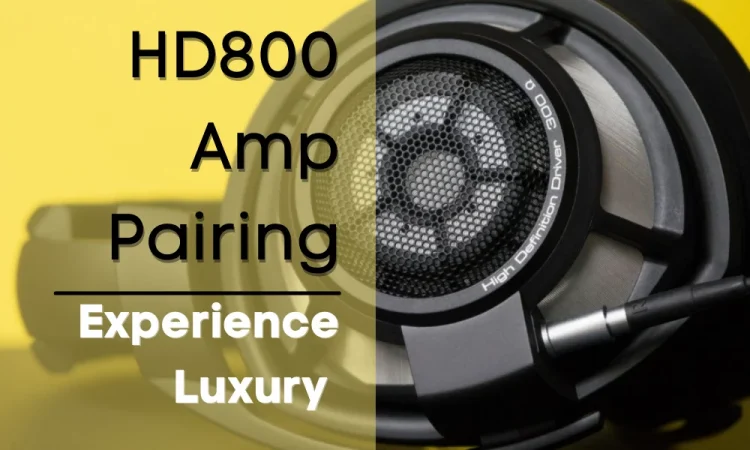Blu-ray and SACD have been in the battle for quite a while. There are no major differences, but you might want to know the specifications for both.
So which one should you choose: Bluray audio vs SACD?
SACD is a bit louder due to its higher frequency representation than Blu-ray audio. Apart from that, SACD uses DSD (Direct Stream Digital) format and Blu-ray uses Dolby TrueHD or DTS-HD Master Audio codecs formats. Blu-ray audio is compatible with any surround system but SACD is only compatible with up to 5.1 surround systems.
These are the nitty-gritty of blu ray audio and SACD comparison. But if you want a complete insight into their pros, cons, and other specifics, dive into our article.
Here we go-
Comparison of Bluray Audio Vs SACD
Don’t worry, you don’t have to be a tech geek to understand the differences.
However, before you dive into all the numbers, take a look at all the basics about Bluray audio and SACD.
What is Bluray?
Bluray is a digital video storage format. And the ‘blu ray’ refers to the blue laser required to read the disk.
The main function of this disk is to store HDTV 720p or 1080p videos that can be streamed for hours.
The audio played by a Blu-ray CD, is the Blu-ray audio. This audio uses Dolby TrueHD or DTS-HD Master Audio codecs formats.
What is SACD?
SACD or Super Audio CD is a read-only optical disk. SACDs are read by infrared lasers, unlike Blu-ray CDs. It’s mostly used for audio storage.
So you can’t store videos in SACD. What’s more, you can use SACD for multiple audio channels such as the sound system or multichannel sounds.
Unlike the Bluray CD, SACD is only audio storage hence no other contents can be stored on the disk.
Moreover, SACD uses DSD format to save the contents on the disk.
Now that you know what you’re getting into, let’s proceed onto the comparison-
Both the Bluray audio and SACD audio formats are not so different in terms of listening experiences.
However, Blu-ray provides a lot of advantages that SACD cannot. Somewhat similar to the differences between high and low gain.
Ready to find out what makes Blu-ray audio and SACD different?
Blu-ray Audio vs SACD: The Differences
Here’s a direct comparison of the two audio formats.
Both the audio formats have high-resolution sound quality but the real differences are the frequency range, sample depth, and device compatibility.
Hope this will help you get an idea about Blu-rays and SACD, if not which one’s better.
Confused? Let us clear this out for you.
Blu ray and SACD can give you different audio experiences based on these numbers. SACD is recorded in DSD format which has a higher sample rate than the blu rays.
This means the rays of a record player capture better SACD data. As a result, you get better and detailed audio quality.
However, the bit rate of SACD is lower than that of Blu-ray. To put it simply, Blu-ray can process more data in one sec. So the audio quality is uninterrupted and smooth.
On the other hand, the DSD players take more time to read the data in SACD. Although the sound quality is louder, the process takes a long time.
Another feature that affects your listening experience is the difference between analog frequency representation.
The representation of Blu rays is less than that of SACD. This creates SACD audio better and louder than that of Blu-ray audio.
Result: Why Prefer Blu Ray Audio Over SACD?
Do you really want to know?
Well, I’m afraid you will never get a definite answer from the SACD audio vs Blu-ray battle.
Both the audios have pros and cons that favor some while the others look for newer and more advanced audio qualities out in the market.
However, if one is compelled to choose between the two, Blu ray would be the most preferred. And it’s not surprising at all. Here’s why-
The first reason to prefer Bluray audio over SACD would be the limited manufacturing of SACDs.
There are fewer numbers of SACD manufacturing companies than Bluray given the current market state. Compared to SACD, Blu ray has a bigger appeal to the future market.
Along with the low manufacturing rate of SACD, another major drawback is that they are not completely mastered as DSD end to end.
So, if you think you’re getting the full DSD experience, you’re about to get disappointed.
Most of the SACDs are recorded first at 192kHz PCM (Pulse Code Modulation). The audio gets recorded on the disk in PCM format.
After that, when the CDs are played on a recorder, they are downloaded as DSD. Turns out, you can’t avoid PCM even when you’re buying DSD formats.
Hence, it’s pretty clear why companies don’t want to release any more SACDs.
They don’t want to break the trust of their customers by selling SACD which is not completely DSD.
The second reason people choose Blu rays over SACD is that Blu-ray is released for all the systems and is not just limited to 5.1 surround systems.
On the other hand, SACDs in PCM formats have various hybrids, which are excellent in sound quality but are still limited to the 5.1 surround system.
So you’ll have to sacrifice either the front height speaker or the rear backs in your system. On the other hand, Blu rays are compatible with 5.1, 7.1, and even the 9.1 surround system.
What’s more, the SACD formats are not switchable between high-resolution stereo and multiple surround formats. Which is a great advantage for the Blu ray disks.
The best part about Blu-ray audio is that your streaming will remain uninterrupted while switching from stereo to any other system. Switching is as easy as pressing the buttons on your remote.
Here’s a small guide to switching the stereo of Bluray audios through your remote-
| Stereo/System | Remote Button Color |
|---|---|
| 5.1 Surround | Default |
| 7.1 Surround | Green |
| Stereo | Yellow |
Lastly, the stream conversion from PCM to DSD is possible but not very reliable in our opinion. Converting DSD data reduces audio quality.
If you convert an SACD with DSD data to digital format and play it in a PCM player, you might have to compromise the integrity of the audio quality!
Although there are exceptions with high-quality players and systems.
Many CD players support both Blu ray and SACD. So here’s a list of our choice for
high-quality players that play both SACD and Blu ray CDs-
| Product 1 | Product 2 |
| Product 3 | Product 4 |
There is a debate over whether or not you need a screen when listening to blu-ray audio. But it’s not as complicated as it sounds.
Blu-ray audio works perfectly without any video content.
All you need is your speakers and a 15 or 18-inch subwoofer to experience the best Blu-ray audio.
There’s no need to turn on the screen unless you want access to the video contents of the CD.
FAQs
Is Blu Ray audio better than SACD?
There are no major differences in audio quality. But in terms of frequency, stream conversion, and compatibility limitation, Blu ray audio quality is leading the current market. Switchability between high-resolution stereo and multiple surround formats has also taken the Blu ray audio a bit higher.
Does SACD sound better than CD?
Definitely! SACD was introduced way back in the 2000s. And since then people have been loving the superior audio quality of SACD way more than that of a CD. Even now, with all the advanced technologies around, a lot of people consider SACD as the best experience of the soundstage.
What format is DVD audio?
Just like the Blu-rays disks, audios in DVD are stored in the linear PCM format. The audios are mainly stored on the disk in uncompressed format or through the compressed lossless packing method.
Endnote
The blu-ray audio vs SACD argument mostly comes down to you, whether you like SACD audio over Blu-ray audio or vice-versa.
But given modern innovation and market status, Blu-ray is leading the disc battle. But only by a few points.
Let us know which audio format do you think is the best?
Hope you find the rhythm to your life song!



